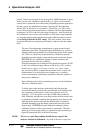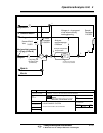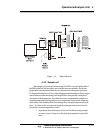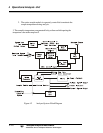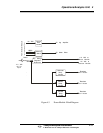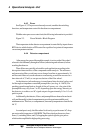
4–18
4 Operations/Analysis Unit
Teledyne Analytical Instruments
A Business Unit of Teledyne Electronic Technologies
direct meter indication, which greatly eases the task of balancing the system
during initial system installation and periods of calibration.
The DC voltage levels are fed to a logarithmic ratio amplifier which pro-
duces a voltage output that is proportional to the logarithm of the ratio of the two
DC input voltages. This output voltage, directly proportional to the concentration
of sample, is, within certain limits, a linear function of the concentration. For
purposes of transmission, the voltage signal is converted by an E-to-I converter;
thus, the output signal from the analysis unit is a current signal that is proportional
to the concentration of sample in the sample module.
There is also an option of providing an automatic zero function (see draw-
ing B-14729) in the control unit. This circuit provides electrical signals for
switching a fluid which contains none of the material to be measured into the
sample module, electrically adjusting the zeros and switching back to sample.
4.4.1 Source Module
The source module is the source of infrared energy. This is provided
through the use of a high-intensity mini IR lamp or a quartz iodine lamp
operating directly from a 5.0 volt stable supply or a 6.3 V transformer. To
ensure a stable source of radiation in the face of line-voltage variations, the
lamp transformer derives its input directly from a line voltage-regulating
transformer, selected for its ability to maintain a constant output voltage level
regardless of fluctuations in the input line voltage within the control range of
105 to 130 VAC.
In some applications where we have an abundance of energy due to
low sample absorption, the focusing lens is removed to avoid excess energy
reaching the detector. However, other systems have high energy losses in the
sample module due to strong sample absorbance or exceptionally long
sample path-lengths. These systems require a focusing lens to gather and
collimate the radiation for maximum utilization of source energy. The
collimating lens is usually quartz, but may be CaF2 for longer wavelengths.
Also the source lamp may be a differenct type, to emit more radiation at the
longer measuring wavelengths. (Consult manual addendum descriptions).





